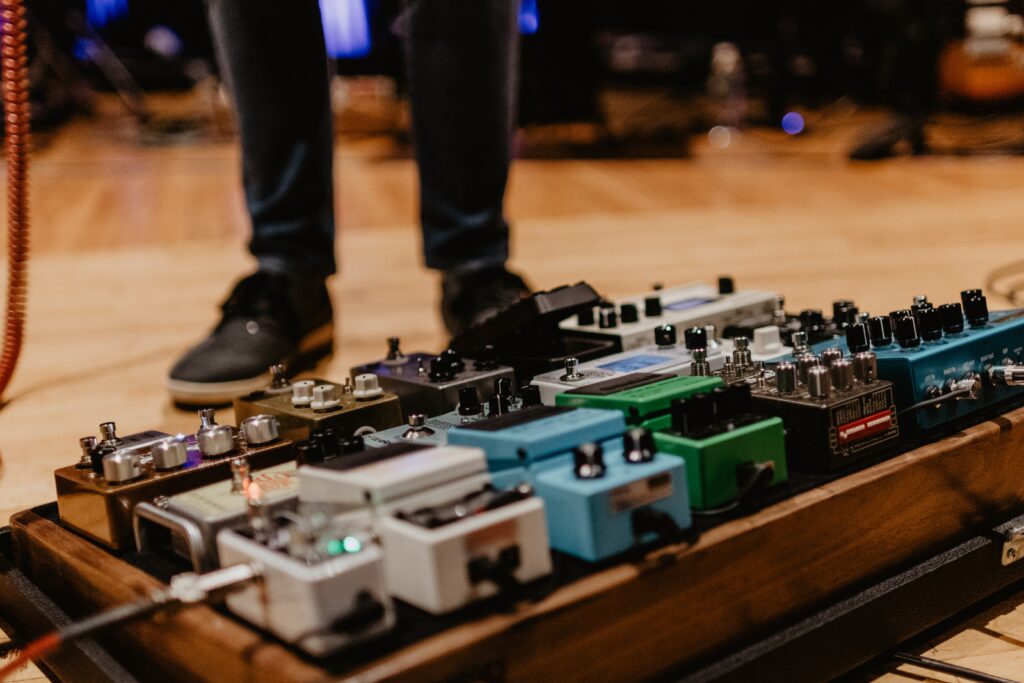Well, X+1 is normally the formula most of us work to.
This can be a tricky question to answer, as the number of pedals you need will depend on your playing style, the type of music you’re playing, and your personal preferences. But don’t worry. We have some great guidelines for you.
- Your playing style: For example, if you’re confident in using your guitar to control pedals, then you’ll need fewer gain pedals. One decent higher gain drive pedal which cleans up well by using the volume knob of your guitar can be the key. However, if you like to have everything flat out all the time and like to switch up between fuzz, overdrive, distortion, and clean a lot, then you will need more. I’ll just add that some of the best clean tones ever have been overdrive pedals with the guitar’s volume turned down.
- The type of music you’re playing: Different genres of music require different types of sounds. For example, if you’re playing in a jazz trio, you may want to use a chorus or reverb pedal to create a warm, spacious sound. If you’re playing in a heavy metal band, you may want to use a distortion pedal to achieve a cutting, crunchy tone. For rhythmic delay sections, you could require several delay pedals. Those needing the most pedals normally are playing in cover bands where they need to sound like many different bands. This is also true of guitarists in bands with many albums under their belts and where all the albums have varying sounds. Check out John Frusciante’s or Ed O’Brien’s boards, for example.
- Your personal preferences: Ultimately, the number of pedals you use will come down to your personal tastes. Some guitarists prefer a minimalist setup, while others like to have a wide range of options at their feet. Neither option is wrong as long as it makes you happy.
With that said, there are a few general guidelines you can follow when deciding how many pedals to include in your setup. Here are a few tips:
- Start small: If you’re new to using pedals, it’s a good idea to start with just one or two and build from there. This will give you a chance to experiment with different sounds and get a feel for how pedals can enhance your playing. We recommend an overdrive, tuner, and a delay pedal to get you going. Our rumble seat is a 3-in-one pedal containing high-quality drive, delay, and reverb and is used by touring bands worldwide such as the Who, Chicago, Stevie Wonder, and many more.
- Don’t go overboard all at once: While it can be tempting to load up on pedals, it’s important to remember that each pedal you add will require more time and effort to set up and maintain. Additionally, too many pedals can actually detract from your sound, as they can muddy up your tone and make it harder to control. Option paralysis really does hurt creativity, so remember to practice your board as well as your guitar and build it up over time.
In conclusion, there are no hard and fast rules for how many pedals a guitarist should have. Ultimately, it will depend on your playing style, the type of music you’re playing, and your personal preferences. However, by starting small, focusing on the essentials, and not going overboard, you can create a pedal setup that enhances your sound and helps you achieve your musical goals.

